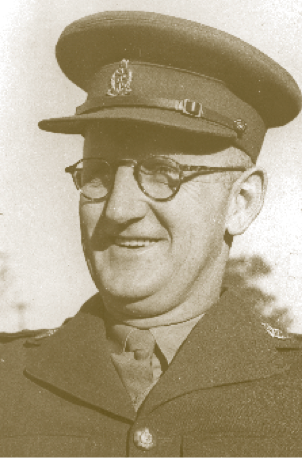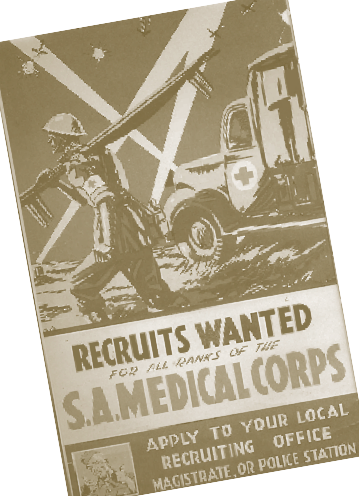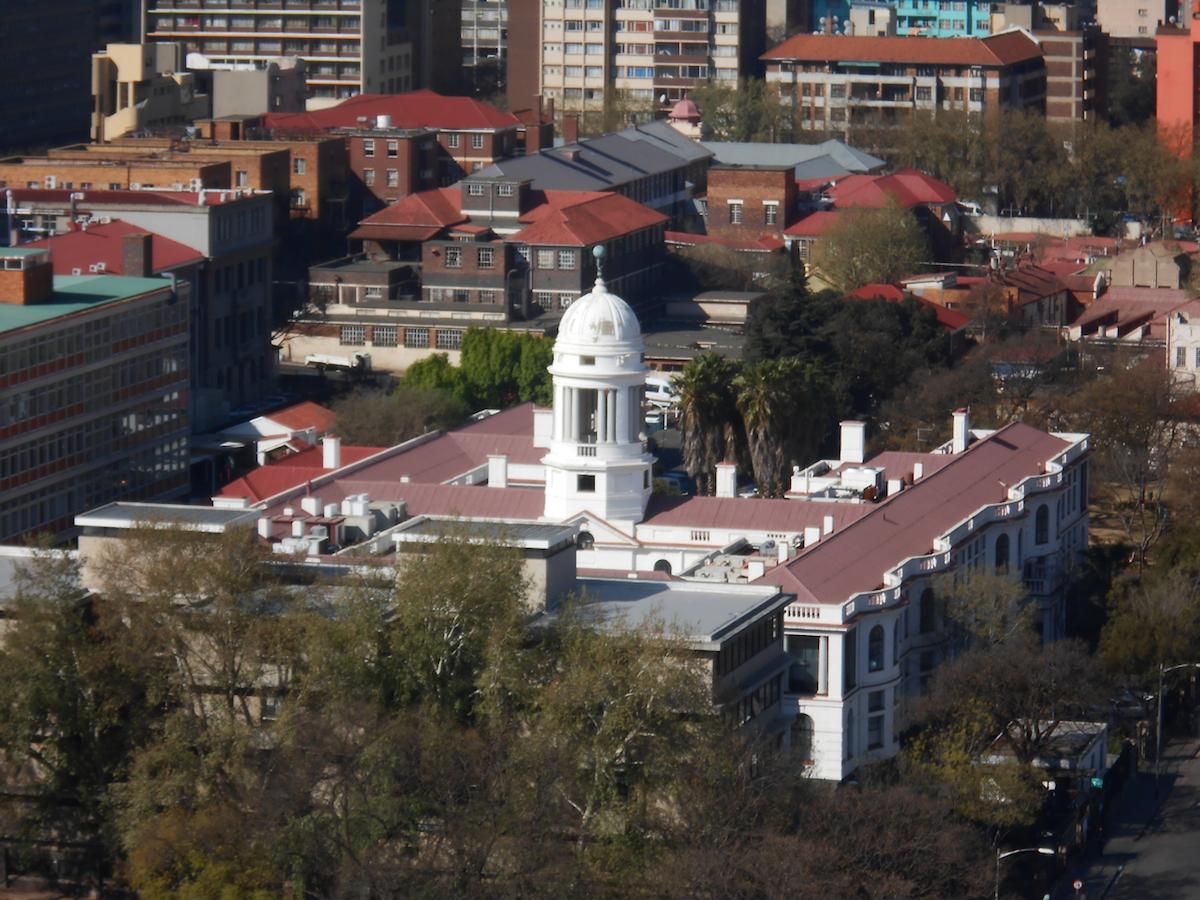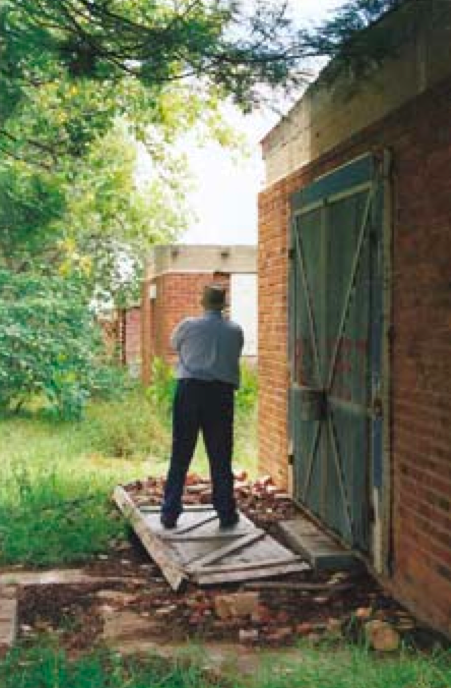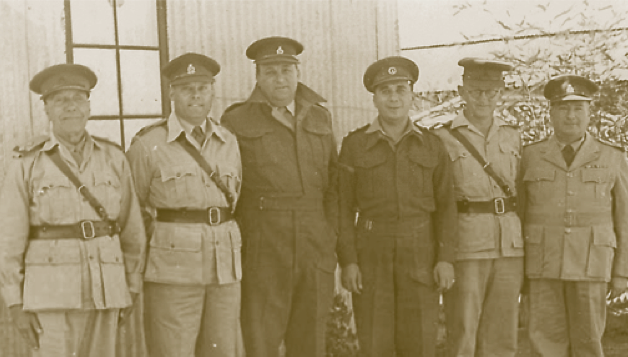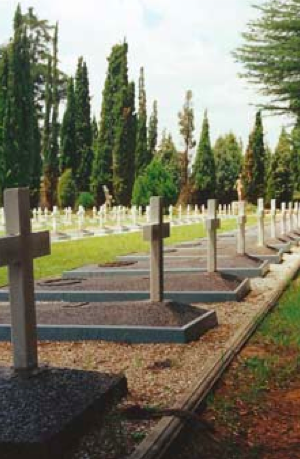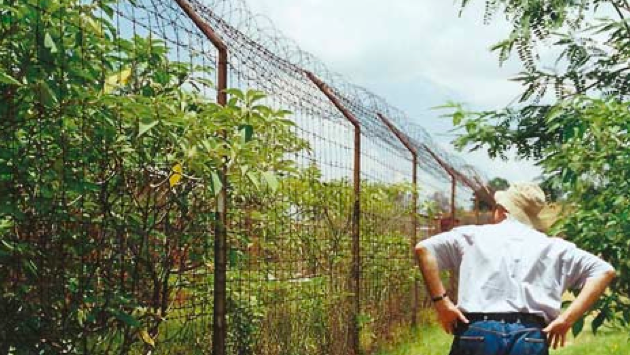
Disclaimer: Any views expressed by individuals and organisations are their own and do not in any way represent the views of The Heritage Portal. If you find any mistakes or historical inaccuracies, please contact the editor.
[Published on The Heritage Portal in June 2015] The Spargo's are an ancient and, according to the available historical record anyway, honourable Cornish family. However, they have been more notable for their commitment to the arts of peace than those of war and it therefore came as a surprise to me to discover many years later that as a young man my father had served as a volunteer in No. 2 Company, South African Medical Corps. This unit formed part of the Active Citizen Force (ACF), a form of volunteer peacetime army established by the South African Defence Act of 1912. Further enquiries, however, revealed that in those years the family, like numerous others, was so impoverished by the economic problems of the times that the lure of several weeks of free 'holiday' per year at Potchefstroom Military Camp as a member of the ACF was a major factor in his enlistment!
Alfred Hugh Spargo July 1943
However, the outbreak of war in September 1939 brought a sudden change in attitude and, like tens of thousands of other South Africans, he volunteered for full-time military service. As he suffered severely from a duodenal ulcer he was to his great chagrin rejected by the Union Defence Force (UDF), in spite of his pre-war membership of the ACF. However, a break in the dark cloud of rejection soon appeared. At the time he was employed in the Johannesburg City Health Department and one day some months later a member of staff came rushing into the office to report that the doctor on duty in the recruiting section at the Drill Hall was old and allegedly almost blind: now was the time to get in. Accordingly my father and several colleagues who had been similarly rejected rushed off to the Drill Hall and, mirabile dictu, all passed their medical! In my father's case his classification had miraculously changed from 'Unfit for all forms of service with his unit or corps' to 'Fit/A1' 2, and he was assigned to the 6th Hygiene Company, South African Medical Corps. However, the UDF soon discovered the error of its ways and my father's medical category was at once lowered to one which allowed him to only serve within the Union, and not "Up North". Fortunately, to his great satisfaction he was still permitted to wear the famous Red Flash, an orange-scarlet shoulder tab which signified the wearer's willingness to serve outside the borders of South Africa.
Recruitment poster from the time
Soon after the outbreak of war the Union Government arrested numerous enemy aliens resident in South Africa, as well as various South African citizens considered to be a danger to the State. These were placed in internment camps located at Jagersfontein, Koffiefontein, Baviaanspoort, Leeuwkop and Andalucia. As they housed non-combatants these camps fell under the Department of the Interior, rather than the UDF, and my father was therefore seconded by the UDF to that department in order to assist in their medical administration. He would visit them by rail, returning with various medical and water samples which next day he would deliver for analysis to the S A Institute of Medical Research on Hospital Hill. To my almost delirious excitement I was sometimes allowed to accompany him on these visits to the SAIMR and be shown the laboratories. In those months he often slept at our home in Kensington, Johannesburg, and the war was for him a not unpleasant one.
SA Institute for Medical Research
However, things were to change abruptly when in November 1942 he was recalled urgently by the UDF and moved to a rapidly expanding prisoner-of-war camp at a place called Zonderwater located some 45 km east of Pretoria near the huge Cullinan diamond mine. Then virtually unknown, by the time the war was over the name Zonderwater was to become familiar throughout the country - and indeed in many parts of the world. What was its background?
On 10 June 1940 Italy entered the Second World War on the side of Germany. As the Italian colonies of Abyssinia and Italian Somaliland abutted the British colony of Kenya there was obviously a very real danger that the latter would be invaded by the Italian forces, who had in fact already made minor incursions into Kenyan territory. The Italians clearly had to be driven north and the First South African Infantry Brigade, plus one fighter and two bomber squadrons of the South African Air Force, joined a number of units from other parts of the Empire in order to carry this out. The small opening skirmish at El Wak on 16 December 1940 was followed on 12 February 1941 by the capture of Mega, the Italian HQ on the southern Abyssinian front. In the latter engagement more than a thousand prisoners were taken. Although legally they were British prisoners, South Africa agreed to handle their imprisonment and so the saga of Zonderwater began.
These prisoners, and the thousands of other Italian POW's who soon began to follow them, were moved to the East African ports, whence they were shipped south to Durban. From there they were moved by train to near Pretoria, ending their long journey at a relatively small tented camp adjoining an existing UDF training camp located at a place known, somewhat uninvitingly!, as Zonderwater - without water.
The first batch of Italian prisoners arrived at Zonderwater in February 1941 but as the war proceeded their numbers grew astonishingly, with some 60 000 being captured in East Africa and, later, similarly large numbers in the desert campaigns in North Africa. The initial tented camp at Zonderwater was slowly transformed into a huge, permanent hutted camp, with the POW's - many of whom were outstandingly competent, industrious and willing artisans - themselves carrying out most of the construction work. During the course of the war some 120 000 Italian POW's passed through Zonderwater, with an estimated maximum of about 65 000 at any one time - almost certainly the largest Allied POW camp in the world.
At first the camp was distressingly badly organised and a British delegation sent to inspect it was sharply critical of affairs there. However, late in 1942 everything changed with the appointment as Camp Commandant of Colonel H F Prinsloo, 9 the eldest son of the famous Boer leader Commandant H F Prinsloo, one of the heroes of the Boer victory at Spionkop in January 1900. Colonel Prinsloo, a friend of Smuts and a member of a distinguished Afrikaans family, had as a young boy himself been imprisoned with his mother in a British concentration camp at Ermelo during the Anglo-Boer War - an experience which doubtless coloured his attitude towards the Italian POW's now in his charge. He was a man who, it would very soon become clear, stood no nonsense from anybody. He restructured and massively improved Zonderwater in every way, rapidly gaining the trust and friendship of the POW's and at the same time demanding and receiving substantial support from GHQ in Pretoria for the upgrading of 'his' camp. Conditions improved rapidly and Zonderwater soon became one of the finest POW camps in the world, being run strictly in accordance with the numerous and exacting requirements of the Geneva Convention of 1929.
Remains of the camp hospital, c. 2001
The huge camp, which stretched over hundreds of hectares, was divided into fifteen essentially autonomous 'Blocks,' each consisting of four 'Camps' of 2 000 men. Within these subdivisions the POW's were largely responsible for the day-to-day organisation of their own affairs. Zonderwater became in effect a medium-sized town with a 2 200-bed hospital (of which my father was Senior Administrative Officer) equipped with operating theatres and modern X-ray machines, fifteen libraries and 10 000 circulating books, numerous schools staffed by 150 teachers, a printing press and bindery, a postal service that in 1943 handled an astonishing 6.4 million items, numerous workshops for technical training, twenty theatres, its own large water purification plant and several substantial sewage disposal works, fifteen chapels and 20 Italian chaplains, 500 acres of vegetable gardens plus maize and wheat fields and, not least, a beautiful cemetery. Education played a particularly important role in the camp, with 25 schools and several hundred teachers handling some 10 000 students. Astonishingly, some 1 300 books in Italian, together with dictionaries, were written and produced for use in the camp schools.
Senior UDF medical staff, Zonderwater POW Hospital, June 1943. From left to right: Lt. Koffinas, Maj. Niemann, Lt-Col. Bloomberg, Capt. Tregonna, Lt. Spargo, Lt. Enfield
The prisoners generally behaved in an exemplary manner, rarely attempting to escape and cooperating with the camp authorities, and very soon thousands were used all over South Africa for tasks as varied as building such magnificent structures as the Du Toitskloof and Outeniqua passes to harvesting grapes and clearing prickly pears. Among the prisoners were many men of surpassing ability, such as Eduardo Villa, later to became one of South Africa's most acclaimed artists. At the end of the war the prisoners had by law to be repatriated to Italy but large numbers had been so impressed with South Africa during their time here that they returned as soon as possible, greatly enriching our nation.
Let me briefly recall my own memories of Zonderwater... My father's duties there were such that he was only rarely able to get home for the weekend, so from time to time on a Sunday morning my mother would drive my younger sister Joan and me across to Zonderwater in our 1937 Chevrolet sedan to visit my father. Women were of course not allowed in the camp, so a magnificent special table would be laid for us in the deep shade of the tall bluegum trees near the main gate. There the four of us would be served a most sumptuous lunch prepared by professional Italian chefs and with each of us having a personal highly-trained waiter standing behind us like a footman to attend to our every need. It was something like a miniature medieval royal banquet on the veld! However, the food was not always to our liking and on one occasion I recall being served stuffed tomatoes. No doubt they were a gourmet's delight but with our solid no-nonsense South African tastes of roast lamb or beef accompanied by roast potatoes and rich gravy, Joan and I firmly refused to eat them - until a cold glare and a few very explicit words from my father persuaded us to change our ways and not insult our hosts - whatever we thought of their slushy food!
After the meal I would be taken inside the double barbed-wire fence and introduced by my father to the prisoners, with whom he clearly had the most warm and friendly relations. Many of the POW's had not been home since Mussolini's invasion of Abyssinia in 1936 and thus had not seen their own families for many years. Hence the arrival of a child in the camp - and contemporary photographs reveal a beautiful little boy with fair curly hair - was the cause of the utmost excitement. I would be eagerly picked up, hugged, my face caressed and kissed and generally treated with the utmost tenderness and affection. To my confusion and great consternation many prisoners wept openly as they held me.
I had greatly hoped to see my father carrying a rifle with him when we entered the camp - or at the very least his 0.38 service revolver - but the camp was so peaceful that I never saw any arms at all other than those of the guards at the gate (the white guards had 0.303 rifles and, to my enormous fascination and great satisfaction, the black guards carried highly polished assegais!) and we moved around freely inside as though we were visiting a sort of huge Highveld Holiday Camp occupied by large numbers of foreign male tourists!
Zonderwater Graveyard in 2001
Any group of Italians inevitably will always have a higher proportion of first-class artisans and artists than a similar group from any other country in the world. Thus my father's clothes were soon all taken to pieces by a tailor from Rome, fitted properly and reassembled until in his born-again greatcoat he appeared to be far better dressed than either Mountbatten or Montgomery! The prisoners also presented him with numerous gifts: a beautiful wooden casket carved by one 'A. Ricci', which now adorns the piano in our home in Cape Town, two oil paintings by G. Rossi, now in the South African National Museum of Military History in Saxonwold, Johannesburg, a carved toy yacht complete with sails and rigging, a lovely wooden station for my Lionel O-gauge electric train - and much else besides. My father had a wonderful batman by the name of Guiseppe and when visiting Italy in 1950 my father tried to track him down; sadly, he failed to do so.
The Roman poet Horace declared of the memories of the war dead of his time Non omnes morientur - "They shall not completely die" - and today the fading memory of Zonderwater fortunately lives on in a fine exhibit in the South African National Museum of Military History, a very rare historical volume produced by the prisoners themselves in July 1944, an active but shrinking "Zonderwater Block Association" of old prisoners and, one would like to believe, innumerable memories in thousands of Italian (and South African) families of this quite extraordinary place in our history - a place of which we can and should truly be proud.
But perhaps the last words should be those of Col. Prinsloo in July 1944:
Those who have helped to shape the policy of this Camp have tried to divest themselves from all feelings of revenge and retaliation. Our principle was: discipline coupled with human understanding, firmness mingled with kindness and a deep desire to take into account the peculiarities of the Italian character and the inevitable sufferings of life behind barbed wire. ... We feel that for many years to come when problems of prisoners of war will be discussed the fair name of our country will gain lustre and prestige.
Fitting words indeed.
In memoriam: Alfred Hugh Spargo, 1905-1996
First published in the Bulletin of the National Library of South Africa
Comments will load below. If for any reason none appear click here for some troubleshooting tips. If you would like to post a comment and need instructions click here.

